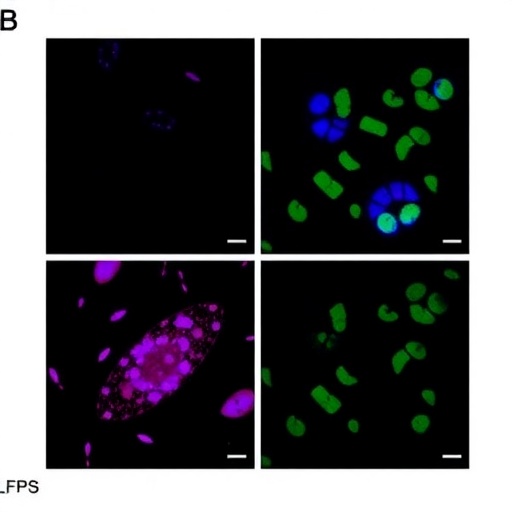
In a groundbreaking study that pushes the boundaries of understanding in health technology innovation, a collective of distinguished researchers, including Brown, Donaldson, and Azagury, is set to introduce a transformative approach to addressing unmet health-related needs. This innovative framework proposes a community-based immersion strategy for health technology innovators, thereby enriching their contextual appreciation and recognizing a broader spectrum of unmet requirements in healthcare.
The conventional methods utilized in the development of health technologies often fall short of capturing the complex realities of healthcare environments, which include not only clinical challenges but also social, cultural, and economic factors that influence health outcomes. The proposed community-based immersion approach acts as a bridge, linking innovators with communities facing specific health challenges, thereby opening avenues for insightful dialogue and collaboration. This model asserts that true innovation can only be birthed from a thorough understanding of the community’s needs, turning innovators into advocates who are intimately connected to the real-world issues at hand.
Immersive experiences provide innovators with not just academic knowledge but also firsthand insights into the lived experiences of individuals in healthcare settings. By engaging directly with patients, healthcare providers, and community stakeholders, these innovators can identify subtle yet critical issues that might otherwise be overlooked in sterile laboratory environments. This methodology recognizes that the line between the creator of technology and the end-user is not only blurred but essential for meaningful solutions.
Furthermore, the integration of community feedback into the design process can foster more inclusive health solutions that cater to diverse populations. This leads to the development of technology that is not only beneficial but also equitable. The authors of the study emphasize that the voices of marginalized or underrepresented populations often go unheard in traditional health innovation processes. The community immersion framework provides mechanisms through which these voices can be amplified, ensuring that innovations do not perpetuate existing disparities but instead address a wide array of health-related needs.
The researchers also discuss the role of empathy in the innovation process. By embedding themselves within communities, health technology innovators can cultivate a deep sense of empathy, which is crucial in designing products that resonate with users. This humanistic approach to innovation stands in stark contrast to the often clinical and detached view held by innovators who have not engaged with those impacted by their work. Empathy-driven innovation not only enhances product relevance but also fosters trust between inventors and the communities they serve.
Through this community-based immersion model, the study highlights the potential for creating sustainable health innovations that adapt to changing contexts and patient needs over time. Technological solutions cannot be static; they must evolve as healthcare systems and social determinants of health transform. By maintaining close ties to the communities they aim to serve, innovators can gain insights into shifts in needs, thus allowing their technologies to remain relevant and effective.
The paper also touches on educational environments, proposing that health technology programs incorporate these immersive experiences into their curricula. By preparing future innovators to engage directly with the communities, they will not only be better equipped to identify unmet health needs but also to develop culturally competent health technologies that are welcomed and embraced by end-users. This educational shift could pave the way for a new generation of health innovators who prioritize community engagement from the outset of their careers.
Moreover, the implications for health policy are significant. The findings of this research could inform policymakers on the importance of fostering environments that enable partnerships between innovators and communities. By embedding community input into policy development and implementation, policies can become more responsive and effective in addressing the actual conditions and requirements faced by populations.
The study further asserts the need for funding bodies and stakeholders in health technology to recognize the value of community engagement. By allocating resources towards initiatives that encourage and facilitate these immersive experiences, organizations can catalyze a wave of innovation that is both impactful and grounded in the realities of users. This investment will not only spearhead the creation of better health technologies but also promote healthier communities through preventive and tailored health solutions.
The authors conclude by reflecting on the transformative potential of rethinking the innovation process through a community-centric lens. As health technology continues to evolve at a rapid pace, ensuring that innovations are informed by and beneficial to the communities they serve is paramount. This study serves as a pivotal call to action for innovators, educators, and policymakers alike to embrace a model that prioritizes empathy, understanding, and community engagement in the face of unmet health needs.
The research may very well redefine the standards of health technology innovation, advocating for a future where technology solutions are not just created for communities but are created with them, ensuring that no voice goes unheard in the quest for better health outcomes.
Subject of Research: Community-Based Immersion in Health Technology Innovation
Article Title: Community-Based Immersion for Health Technology Innovators: Providing a Broader Perspective for Unmet Needs and Enriching the Contextual Appreciation of Unmet Health-Related Needs
Article References:
Brown, C., Donaldson, K., Azagury, D. et al. Community-Based Immersion for Health Technology Innovators: Providing a Broader Perspective for Unmet Needs and Enriching the Contextual Appreciation of Unmet Health-Related Needs.
Biomed Eng Education (2025). https://doi.org/10.1007/s43683-025-00194-6
Image Credits: AI Generated
DOI: 10.1007/s43683-025-00194-6
Keywords: Community-Based Immersion, Health Technology Innovation, Unmet Health Needs, Empathy in Healthcare, Sustainable Health Solutions
Tags: addressing unmet health needscollaboration between innovators and communitiescommunity-based health innovationcultural influences on health outcomesengaging with healthcare stakeholdershealth technology development strategiesimmersive experiences in healthcarepatient-centered health solutionsreal-world health challengessocial determinants of healthtransformative approaches in health technologyunderstanding healthcare environments




